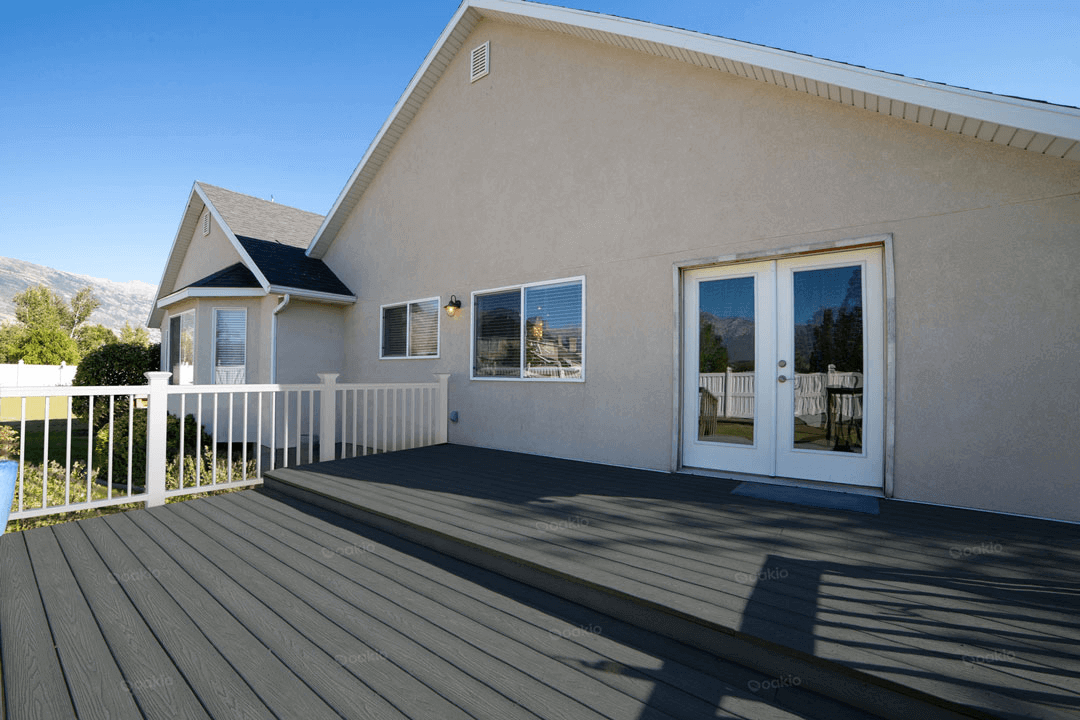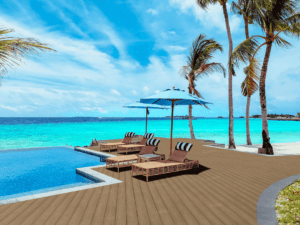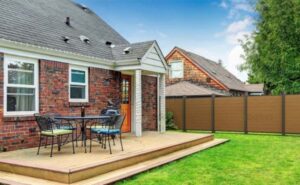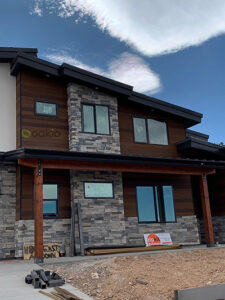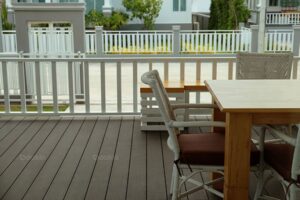Deck Railing Height Code: Requirements and Guidelines
A deck wouldn’t be complete without a proper deck railing in place. Deck railing is crucial to ensure every deck user’s safety—especially if the deck is elevated as the risk of falling and sustaining injuries is likely.
As such, there’s something called a deck railing height code. Since they’re a safety feature, their height and design are regulated by different building codes across various jurisdictions. These codes are in place to ensure that the railings are on par with standards, and up to a certain ‘safe’ height and design.
In this guide, we’ll discuss these deck railing height codes and the requirements and guidelines. Read on!
Deck Railing Height Code and Requirements
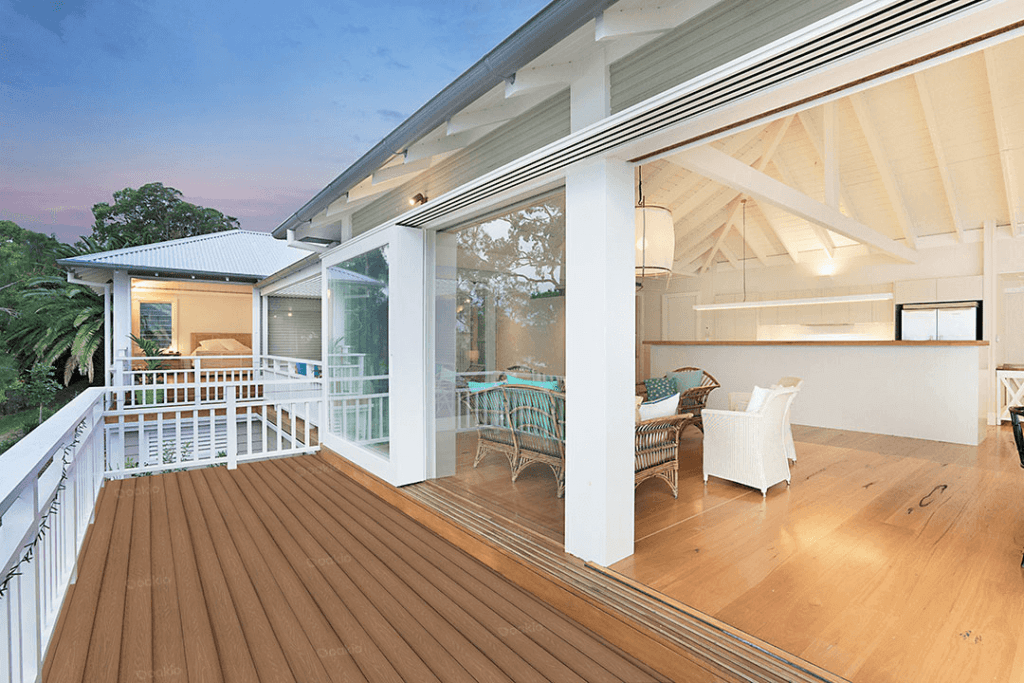
When constructing an elevated deck, a railing is needed to ensure every user’s safety by preventing fall-related accidents. In line with this, there are codes to comply with—deck railing height codes focus on height, the spacing of balustrades, and the overall structural integrity of the railing system:
Height Requirements
There are certain height requirements for railing systems depending on various factors. Two of those factors are the deck’s intended use and the applicable building codes in the area and locality you live in.
What is the Best Height for a Deck Railing?
There’s no single best height for a deck railing, as there are various factors to consider when choosing one. But to give you an idea, the best height is one that meets both aesthetics and safety standards.
While there are local codes that require a minimum height of deck railing, many homeowners today prefer taller than minimum railings to add safety and privacy. There is also an international code that some residents can follow.
The key is to strike a balance between safety and aesthetics so you can ensure adequate protection without skimping out on aesthetics.
Residential Deck Railing
For residential decks, the International Residential Code (IRC) sets the standard height of railings at a minimum of 36 inches from the deck surface, stretching all the way to the top of the railing.
This height is suitable for most residential properties, offering significant fall protection without sacrificing the visual appeal of the outdoors. But though the IRC recommends this deck railing height, it’s best to check your local government office as they’re the ones with jurisdiction concerning building codes.
Some local jurisdictions also have stricter codes, especially when the locality experiences extreme weather conditions or challenging geographical limitations.
Commercial Deck Railing
Commercial establishments have usually higher deck rail heights than residential properties to facilitate and ensure added safety. The International Building Code (IBC) mandates all commercial properties with elevated decks to have a minimum railing height of 42 inches.
This height reduces the risk of falls in these establishments since they experience more foot traffic. Aside from the height requirement, commercial railing systems also need to meet stricter strength and durability standards to ensure every client and customer’s safety.
Read More: Pros and Cons of Composite Deck Railings
What is the Maximum Deck Height Without Railing?
In case you want to create an elevated deck, you might be wondering how high of a deck can be built without including a railing system. Fortunately, there’s a code for this exact scenario—as the IRC states, any deck that has a 30-inch or more elevation from the ground should have a railing system.
Though that 30-inch (2.5 feet) minimum looks and feels too much, this is a strict requirement to ensure the decks have the necessary protection to prevent falls and subsequent injuries. Decks that are lower than 30 inches may not be legally required to have rails, but adding one can still enhance safety.
Some local codes might also have stricter rules than the IRC, meaning you’ll need to follow their requirements rather than those of the IRC. We suggest you check out your local government office handling building codes to verify the railing height requirements.
Baluster Spacing Code
Apart from the actual deck railing height, there’s an additional requirement called the Baluster Spacing Code—another important aspect of deck railing safety. Balusters are the vertical posts that support the railing and the handrails, ensuring the necessary stability and structural integrity.
Both the International Residential Code (IRC) and the International Building Code (IBC) have strict guidelines regarding the spacing of balusters, with 4 inches of maximum allowable space between each baluster as measured from the inside edges.
This spacing requirement is actually meant to prevent small children from getting their heads stuck between the balusters.
Strength Requirements
Apart from spacing, the IRC and IBS also have strength requirements for deck railings to ensure they are rated to withstand certain levels of force and impact. These codes require that a complete railing system, including the balusters, should be able to resist a concentrated force of 200 pounds applied in all directions at the top of the rail.
This strength requirement ensures that the railing will be able to resist high-pressure impact and load, and anyone who leans over it will be safe and sound from the thought that the railing will give way because of its weak structure.
Do You Need Deck Railings?
It largely depends if your deck is an elevated one. If it’s elevated and it sticks 30 inches or more from the ground, you’d definitely need one. But if it’s lower than 30 inches, you’re not technically required to add one considering the IRC’s requirements.
Nonetheless, it’s better to add one especially if you have children and elderly in your home. You need to also consider that your priority is following local codes instead of the IRC in your case. Should you decide to add one, it’s crucial to choose durable, long-lasting railing materials.
Oakio offers high-quality, weather-resistant, and low-maintenance railing materials that combine aesthetics and durability in one package, ensuring your deck remains safe, attractive, and comfortable for many years to come.
Need Deck Railings? Go for Oakio!
In summary, there are different deck railing height codes to take note of and subscribe to. While there are international codes, your local building codes are superior and to be followed strictly. Nonetheless, if you need durable deck railings that combine safety and aesthetics, your go-to company is Oakio!
Oakio offers premium, eco-friendly composite railing and decking materials designed to withstand extreme weather and pressure while enhancing your deck’s beauty. Get in touch with us today and let’s start your decking journey!
Need more tips and how-tos while being able to enjoy our email subscriber-exclusive deals and discounts? Sign up for our newsletter today!
Trending Reading
What Are the Differences Between the WPC Board and PVC Board?
[2024 Update] How Long Does WPC Decking Last?
